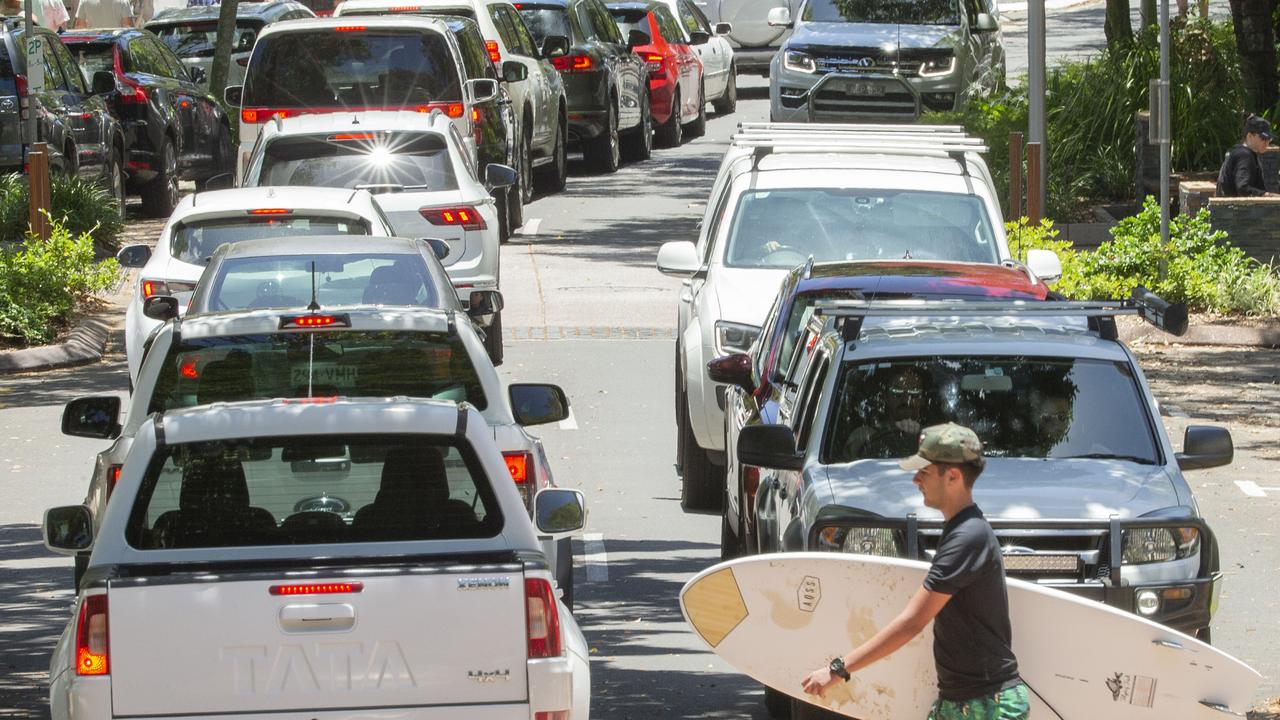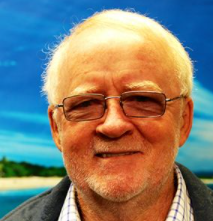We all know tourism is an important part of the Noosa economy, but when did the tail start wagging the dog?
Is this particular sectional interest group serving its own interests at the expense of the community?
To try to answer these and other relevant questions, let’s first set the scene.
Last year Noosa Council decided on a fundamental change to the way it would fund Tourism Noosa’s major revenue item of $2.5 million. Instead of a levy on local business properties, it would come from general rates. Not from business, but your money and mine.

But Tourism Noosa felt ambushed, made a lot of noise and extracted hasty promises that Council would ‘consult’ with them for a further 12-months. Meanwhile, the money tap was left on.
Now, briefly rewind to the 1990’s, when the small tourism promotion body in Noosa was funded by members and a modest Council grant. The major problem for the local economy in those days was visitor seasonality. Some months it cost money to keep business doors open, but closing was bad for Noosa’s reputation as a visitor destination.
Noosa Council funded initiatives at that time to develop significant community events like the jazz festival in the ‘slow’ months that would also attract visitors. Marketing for a few years was also specifically designed and delivered to attract overseas high-yield visitors, the ‘gold’ for tourism miners.
Even back then residents did not want more visitors in the crowded, peak holiday periods.
Continuing pressure from business in the 1990s for more funding resulted in the introduction of the tourism levy on business properties. This led to the rise and expansion of Tourism Noosa through levy funding that rose to $2,500,000 last financial year.
Council then abandoned the levy and instead gave Tourism Noosa its bag of cash from general rates this financial year.
That brings us to what’s going to happen in the financial year about to start. Are negotiations foreshadowed by a Council resolution last year underway? Is the community going to be asked how much of their rate money should be given to Tourism Noosa?
Surely the first question should be this; what is the value to the community of allocating rate money to activities of Tourism Noosa? That should lead to an examination of their current activities, because there have been significant changes in the last 20 years.
There has been a huge increase in visitor numbers, which is affecting the lifestyle of many residents.
If the promotional activities of Tourism Noosa increase those numbers, is that a positive or a negative? Will it get to the stage where Noosa is not considered to be an alternative to other locations, just a competitor? Or has it already got to that stage for many?
There has also been a big change to the seasonality issue. The chart provided by Tourism Noosa in their Tourism Strategy Noosa 2017-22 now shows a reasonable spread across months of the year.

Notably this Tourism Strategy document had as a key target ‘Identify, target and attract new events’. No doubt many residents adversely affected by events already will question how that activity fits with the Tourism Noosa core value of ‘Create a sense of family with the Noosa community’.
So it appears the seasonality issue is about as good as it’s likely to get. Many would argue that Noosa can’t afford to continually increase annual visitor numbers. Large spending on tourist promotion in the future could even be counter-productive.
It’s time for a genuine conversation about how much and what kind of tourism we now need, what the real costs are to our lifestyle and environment. Ratepayers who are heavily subsidising the industry MUST have a voice in this conversation about the place they live in.
It’s time this dog started wagging its own tail.



This Post Has 4 Comments
I agree that visitors should pay for parking for Noosa National Park – but I feel that residents should be given a yearly pass so that they can park for free. Perhaps the same should apply system should apply to Hastings Street?
Wondering why the national parks don’t have an entry fee per car. Kuringai Chase NP in northern Sydney charges one…why don’t we?
Is it the fear of elitism ? Or that those without much disposable income cannot afford to use their own National Parks? Arguments against these points include the value of a “user pays” model, a system that is used worldwide. If the Daytrippers who don’t pay for their use of this fragile National Park Noosa and the NNP may end up an overcrowded, downtrodden, rubbish strewn dump. This is the biggest issue facing ratepayers in a long time.
Congratulations on establishing Noosa Matters as a forum for discussion of things that matter to Noosa.
We agree with you that ‘tourism is an important part of the Noosa economy’ and because of this, it is important that the costs and benefits of tourism are measured by Noosa Council or Tourism Noosa as accurately as possible and further, that funding is communicated and transparent to the community and businesses. It is the latter point , where we think Noosa Council has hoodwinked you along with other residents into thinking that the tourism sector in Noosa is not contributing to the costs of Tourism Noosa or tourism in Noosa now that Council has abolished the Tourism Levy.
Let me explain…
Consider a typical holiday let unit in The Islander Noosa Resort (which we manage) with a rateable value of $110,334 as an example.
In 2020-21 the annual general rate was $1605.12 (made up of the minimum general rate of $1372 + the Tourism and Economic Levy of $233.12).
The Tourism and Economic Levy was abolished in 2021-22 and the Strata Transitory Accommodation Category 26 general rate was introduced with a minimum of $2318. This change resulted in rates for holiday let units increasing by $712.88 or 44%, whereas most other rates for residential or permanent letting increased between 1 and 2% that year.
Owners of holiday let units in most resorts pay the minimum general rate. Under the new Category 26 (Strata Transitory Accommodation) general rate they pay 200% (double) the general rate that an owner occupier (Category 24 Strata PPR) pays. So, in 2021-22, a holiday let unit in a resort paid $2318 (Category 26) vs $1159 (Category 24 PPR) and this is proposed to increase to $2434 vs $1217 in 2022-23. It would appear from these figures that the owners of holiday properties are subsidizing owner occupiers and the dog, to use your analogy, is wagging its tail, at least in a resort.
While on the subject of cross-subsidisation and who pays for what, the recently introduced Category 26 rate for holiday let units is also 67% higher ($2318 vs $1391 in 2021-22 and $2434 v $1461 in 2022-23) than if the same property were permanently let (Category 23). This is a premium of $927 (2021-22) and $973 (2022-23) that is paid by owners of holiday let units over permanent let units in a resort using the same council facilities. Where is the equity in this difference, given that both are commercial investments by the owner and are easily interchangeable?
We have not heard anyone in the tourism industry say that the abolition of the Tourism and Economic Levy was a good thing since transparency has been lost and rates excessively increased for units in resorts.
We would agree that Tourism Noosa needs to listen more to the tourism industry and the general community and we understand the restructure of the management board has been a start in this direction.
Since when did Tourism become synonymous with short-term letting (as defined and regulated by Noosa Council) and the understandable hostility and angst associated with poorly managed properties in the residential areas?
Good management of tourism brings more employment and lifestyle choices to residents and their families with a greater variety of services including dining, experiences, arts and retail. It enables residents’ aspirations to be fulfilled. For this reason, we urge our community to work with resort tourism accommodation providers to get back to the good old days when Tourists stayed in Resorts and Residents lived in Residential Areas.
Bula Cathy and Rod (The Islander Noosa Resort)
Enjoyed the article, TKU. Wonder are we paying twice and why? Once for promotion, second for the environmental degradation by the influx. Roads, water usage, rubbish removal, more policing. Also wonder is this a clear thought through Biosphere model that is promoted and would be an example? Lastly, what is the short and long term outcome? Is it what we want? Is it being managed, by who, and who for? Please there are no accusations here, I obviously do know these answers. Maybe someone can shed light? My take, the best for the greater community and environment we enjoy based on evidence. Pamela MacQueen